The Gretsch, 60 Broadway: Review and Ratings
between Wythe Avenue & Berry Street View Full Building Profile
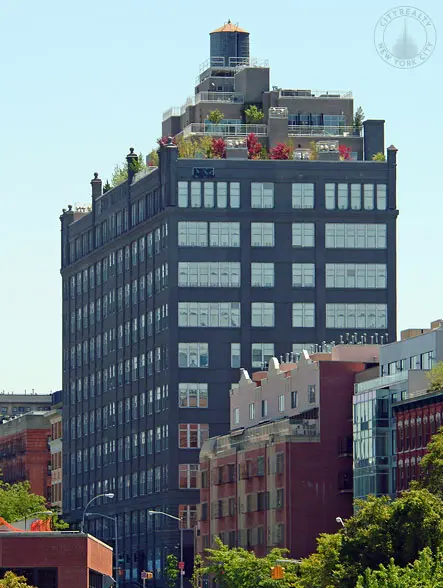

The luxury residential condominium conversion of this former factory building for Gretsch musical instruments had an uneasy beginning in 2003 not because of a weak real estate market but because of community concerns about affordable housing.
A February 17, 2004 article in The New York Times described the controversy:
"Several weeks ago Mikey Weiss, an electronics store owner with an overgrown blond Mohawk, was visited in his shop on the north side of Williamsburg, Brooklyn, by a couple of men in mink hats."
'''These two Hasidic guys, dressed as Hasidically as you could possibly dress, came in and asked me what kind of people live in this neighborhood,'' Mr. Weiss said, adding that he told them the area was largely populated with people in their 20's and 30's, including many artists."
'''They said: 'Artists! That's it!' he recalled. 'They said, 'We want to hear about these artists we've heard are moving to our neighborhood.' They asked: 'Are they noisy? Do they cause trouble?'''
"The visitors were from the community of 57,000 Satmar Hasidic Jews who live in south Williamsburg and who have in recent weeks been alarmed by talk of their neighborhood being invaded by 'artisten,' a Yiddish word that in local parlance is used to describe non-Hasidim who live on the north side...."
"Although the divisions are blurry, Broadway near the Williamsburg Bridge has long been seen as the border between the neighborhood's south side, a working-class Hasidic and Hispanic enclave, and the north side, which has become known for its artists, hipsters and, increasingly, affluent professionals. But as northside rents have soared, and ritzy boutiques and nightclubs have moved in, residents seeking cheaper housing have looked southward. Meanwhile, many young Hasidic families are large and their housing needs have grown accordingly. A collision was perhaps inevitable, and it has focused on a building at 60 Broadway, right on the dividing line."
"On Sunday afternoon, five young Hasidic men stood in freezing wind outside the Gretsch Building, a 10-story, 200,000-square-foot former musical instrument factory that is being converted to luxury condominiums selling for about $550 per square foot. They had just taken part in a protest, one of several that Hasidic men have staged outside the building in recent months. Across the street, on an apartment building occupied by Hasidim, a large banner read: 'The neighborhood is NOT welcoming the Gretsch Building. We need AFFORDABLE housing!'"
"That, the protesters say, is the main issue. Since World War II, when they immigrated from Hungary, the Williamsburg Hasidim have opened synagogues and lobbied for zoning changes to allow for more residential buildings in this formerly industrial area. But recently, community members say, real estate agents and would-be buyers have knocked on their doors offering to buy their homes for at least double the $200 per square foot they are used to paying. Many fear that if even a few agree to that, market rates and property taxes will soar, leading to an unraveling of the community's tightly woven fabric...."
"With Australian Jarrah wood floors and Pietra Colombina limestone fireplaces, the Gretsch will be arguably the most luxurious development the neighborhood has yet seen. But it is not the area's only upscale new condominium complex. Two blocks away, a refurbished cast-iron building, the Smith Gray, has sold lofts at more than $400 per square foot without provoking the ire of the Hasidim."
"Maier Katz, a protester, said that is because the owner of that building is not Jewish, whereas at least two of the Gretsch Building's developers are."
'''If it's not a Jew, it's not our business, we can't do anything,' he said. The men around him nodded. 'If it's a Jew, we can do something.'''
"The Gretsch owners in question are two brothers, Martin and Edward Wydra, Orthodox Jews who are not Hasidim. But to some in the community, they are close enough. Three weeks ago, they took their protest to Martin Wydra's house in Flatbush."
"Most say the main issue is real estate. But in a neighborhood where shopping streets are lined with modest rugelach bakeries and felt-hat stores, where children in matching pinafores play on the sidewalks into dusk, some fear cultural conflicts with more cosmopolitan newcomers from the north side, where vintage jeans and yoga mats are the norm...."
"Putting it more strongly, a flier handed out last month at a protest (and reprinted in the March issue of Harper's magazine) asked the 'Master of the Universe' to 'please remove from upon us the plague of the artists, so that we shall not drown in evil waters, and so that they shall not come to our residence to ruin it....'''
"But Martin Wydra said that far from ignoring them, he and his partners have made many concessions to the Satmars, even offering to sell the building back to them at cost."
'''We felt that because we were Jews ourselves and because there was a concern in the community, that we would give the community an opportunity to develop it themselves and we'd find another project,' he said, adding that the community leaders ended up declining...."
"Even so, Mr. Wydra said, he tried to ease their fears. A plan to add balconies was scrapped to reduce the chance that scantily clad residents would be visible on them; tinting was added to windows on two sides for the same reason. When the Hasidim balked at an idea for an enclosed swimming pool because people in bathing suits might step out onto the sidewalk, that plan was discarded, he said, adding that a rabbi from the community gave the project his blessing."
Apartments have ceilings at least 12 feet high and many also have "free-floating" fireplaces. The building is staffed with doormen, and amenities include a library, a 100-car garage and a health club. The architects are Gene Kaufman of Manhattan and Karl Fischer of Montreal.
The building, one of four that Gretsch had in Williamsburg, has new plumbing, heating and windows . The name etched at its top, Gretsch Building No. 4, will remain and two vintage Gretsch guitars are showcased in its lobby.
Karl Fischer was the architect for the conversion and Andres Escobar & Associates of Montreal was the interior designe.
The building's lobby is clad in black granite, tempered glass, stainless steel, and a metallic curtain, with a reflective well soothing. The residents' library is double-height and glass-walled elevators ascend from this dramatic space, where a fireplace is flanked by floor-to-ceiling bookshelves.
Kitchens have stainless steel Sub Zero refrigerators, Wolf ranges, Asko dishwashers and Nero Impala granite countertops.
The building, which was built in 1916, has a roof terrace, and is also known as 40-415 Wythe Avenue. It has an exposed rooftop watertank and 130 apartments.
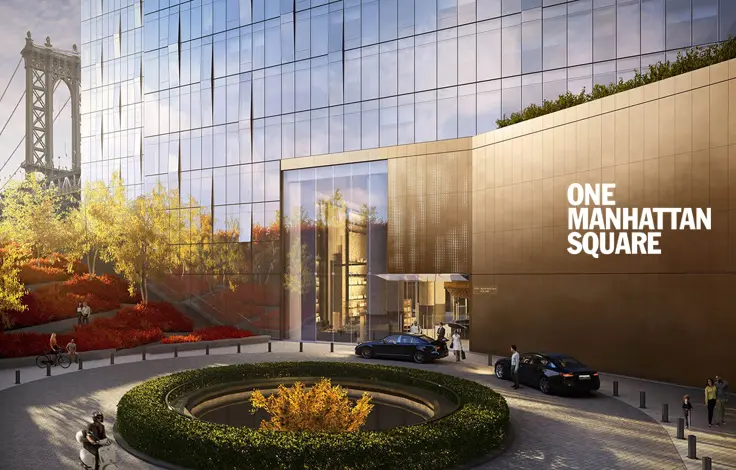
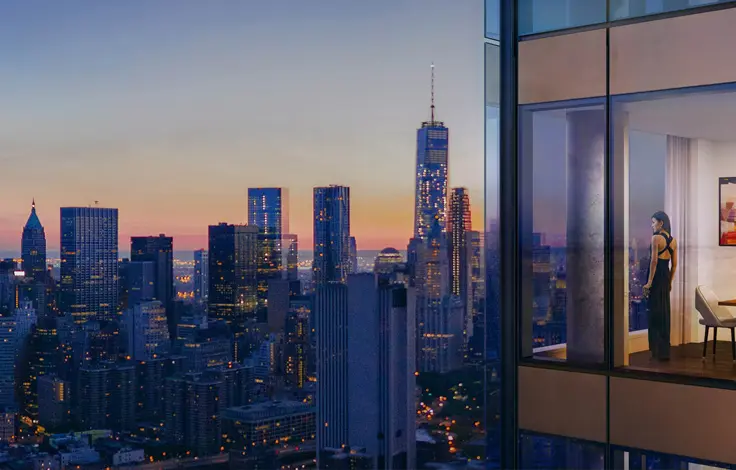
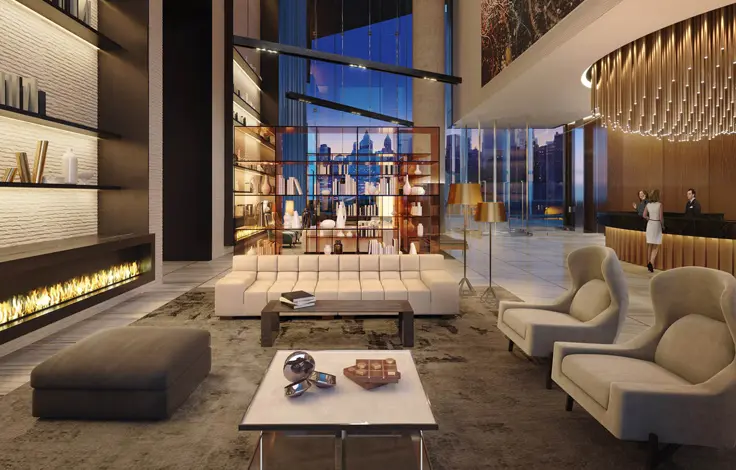
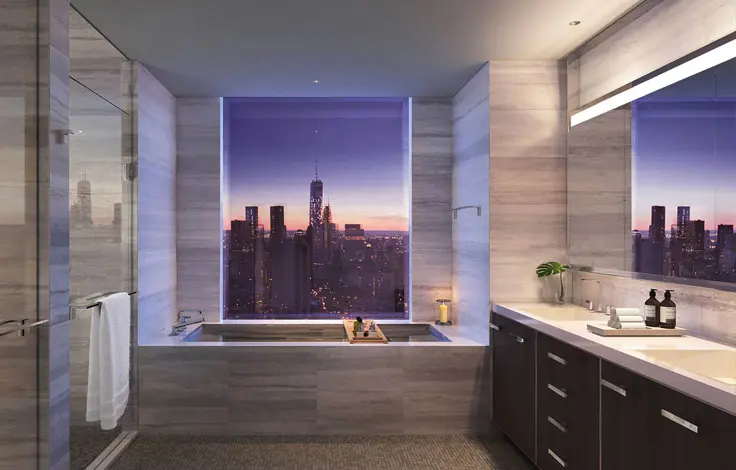
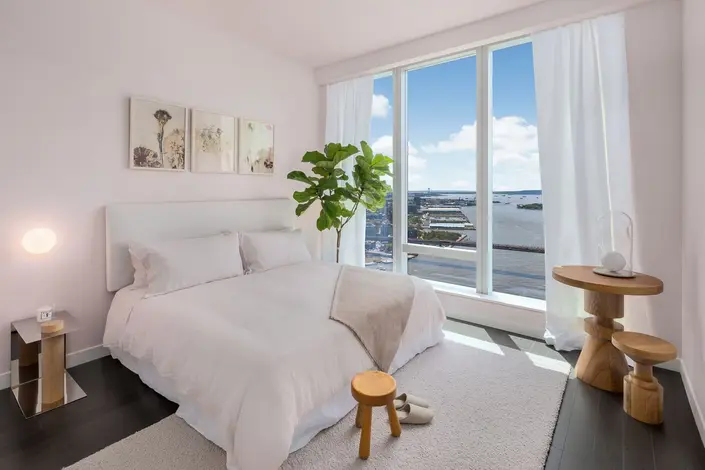
 6sqft delivers the latest on real estate, architecture, and design, straight from New York City.
6sqft delivers the latest on real estate, architecture, and design, straight from New York City.
